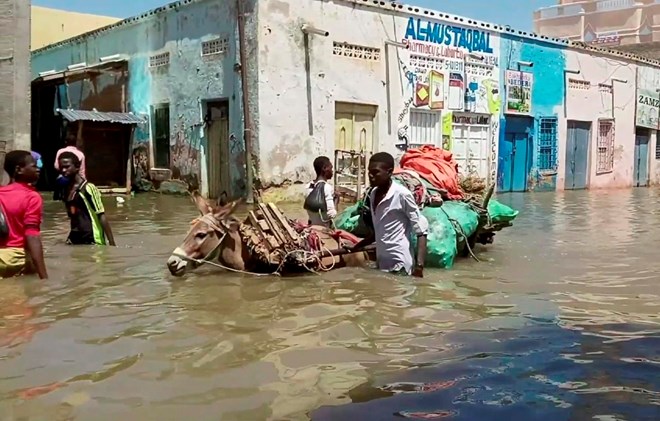Flash floods resulting from heavy rains have claimed the lives of at least 14 individuals, displaced thousands, and caused property damage in the Baardheere District of the Gedo region, according to reports from the UN Office for the Coordination of Humanitarian Affairs (OCHA). OCHA has additionally reported that several areas of Somalia have experienced light to moderate rain over the past week, signalling the onset of the Gu rainy season from April to June. The Gu season is the main wet season in Somalia.
Rainfall forecasts anticipate that the rains will continue throughout March in most parts of the country but with drier conditions toward the end of the season. However, this may result in a surge in disease outbreaks, including acute watery diarrhea/cholera and measles, as contaminated water poses a health risk in the absence of adequate sanitation and hygiene facilities.
Heavy rains in Galmudug State have resulted in flash flooding and power outages in Adaado and Dhusamareeb towns. A water catchment site on the outskirts of Dhuusamarreeb has overflowed, and low-lying areas have become inaccessible. Similarly, in Adaado town, the Karaama and Waaberi neighbourhoods and other low-lying areas are flooded. Schools and businesses are mostly closed, and the main road that connects both towns has been damaged. In South Gaalkacyo, seven IDP sites have flooded, and an unconfirmed number of makeshift shelters have been damaged.
In Jubaland State, heavy rains have inundated Baardheere District, resulting in the deaths of more than ten people and affecting thousands of others. Nine individuals reportedly died as they attempted to cross a stream amid heavy rainfall on March 20th. Flooding and heavy rains impacted two of the 29 IDP sites, affecting 8,118 IDPs directly. Several houses, latrines, and other facilities were damaged or destroyed. The risk of flash floods and displacement increases as the heavy rain, particularly in the Ethiopian highlands, increases the risk of the Juba River breaking its banks in Baardheere Buaale, Saakow, and Jilib.
The rains have also caused damage and displacement in other parts of the country. In Puntland State, flash floods in Jalam town, Burtinle District in Nugaal Region, have displaced hundreds and damaged property. The floods have also led to the loss of crops and livestock and destroyed infrastructure, including businesses, residential houses, and IDP settlements. Reports indicate that the roads linking Bossaso and Garowe south and to Gaalkacyo have been affected, slowing trade activity. Transport between Garowe and Bossaso through Qardho town has also been affected, and heavy rains have damaged shelters in five IDP sites in South West State, leaving several people without shelter.
OCHA notes that the early onset of the rains may cause pastoral migrations, resource-based conflict, and displacement. Increased rural migration is expected, especially in the southern coastline area along the Juba River, which receives limited rain during the Gu season. Resource-based conflicts could arise as individuals search for water and pasture.

